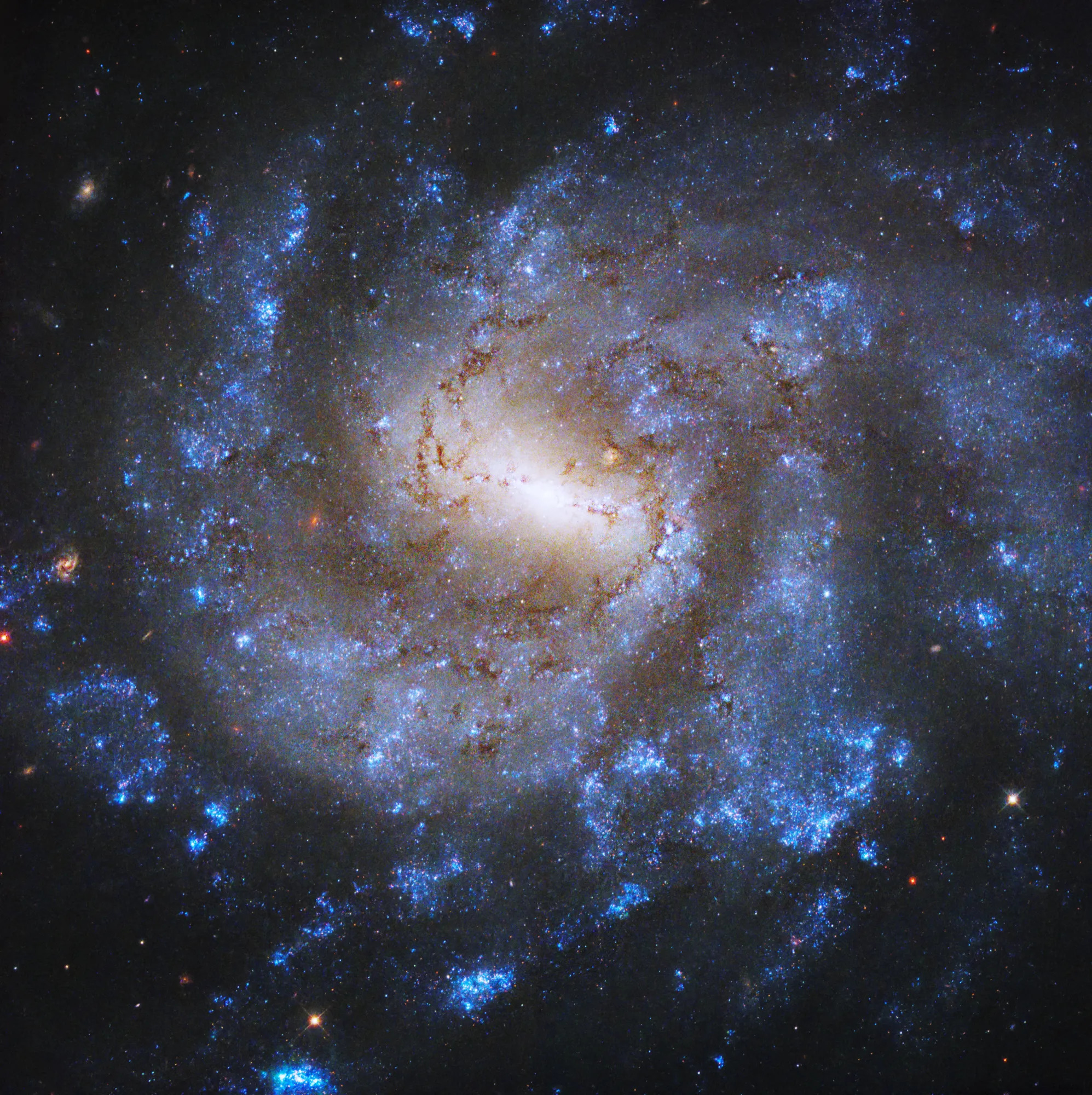Hubble Telescope captures star-packed galaxy spinning like a top (photo)
The average-size NGC 685 galaxy boasts at least 100 million stars.
Some 58 million light-years from Earth, the NGC 685 galaxy appears to be spinning like a top in the depths of space.
The Hubble Space Telescope image, the final of six released as part of NASA's Hubble Galaxy Week from Oct. 2 to Oct. 7, captures the galaxy with its curvy spiral arms dotted with countless pockets of bright blue regions.
Here, astronomers say stars reside in packed regions called star clusters. Closer to the galaxy's center are many curled red light tendrils, representing lanes of gas and dust where new generations of stars manifest across eons.
Related: Hubble Telescope discovers thousands of hot stars camouflaging a spiral galaxy (photo)
The NASA statement accompanying the image describes an average-size galaxy like the NGC 685, which resides in the constellation Eridanus and spans 60,000 light years, can host at least 100 million stars. In comparison, the Milky Way is thought to consist of around 100 billion stars.
Despite the difference in size and number of stars, both galaxies share an interesting feature in that they both have a central bar cutting across their respective galactic nucleus, not unlike the slash across a no-smoking sign. In the latest NGC 685 image, you can spot this bar speckled with red stretching horizontally within the smallest circle of gas and dust.
"Its intense glow comes from many stars concentrated in a relatively small area," according to the NASA statement.
Breaking space news, the latest updates on rocket launches, skywatching events and more!
Previous research has found that such bars are seen in about two-thirds of spiral galaxies. Gas and other stellar material are also fueled toward the cores of galaxies via these bars, reflecting signs that the "formative years" of a galaxy have ended, astronomers say.
While there isn’t much work done on NGC 685 itself, studying barred spiral galaxies like it informs astronomers on how galaxies evolve, and how the process differed for our Milky Way galaxy.

Sharmila Kuthunur is an independent space journalist based in Bengaluru, India. Her work has also appeared in Scientific American, Science, Astronomy and Live Science, among other publications. She holds a master's degree in journalism from Northeastern University in Boston.

